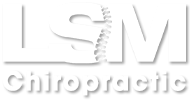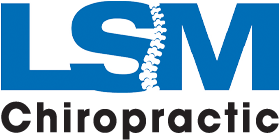Auto Injury Recovery and Chiropractic Care

Auto accidents can be traumatic experiences, causing a wide range of injuries that often go beyond what is immediately visible. Chiropractic care plays a crucial role in the recovery process for auto injury victims, offering a holistic approach to healing and restoring well-being.
Types of Auto Injuries
Auto accidents can lead to various injuries, from minor bruises and cuts to more severe, long-lasting conditions. Common auto injuries include:
- Whiplash: Whiplash is a neck injury that occurs when the head is suddenly jerked backward and then forward. It can result in neck pain, headaches, and restricted neck mobility.
- Back Injuries: The force of a car collision can cause back injuries, such as sprains, strains, herniated discs, and fractures.
- Soft Tissue Injuries: Auto accidents can damage muscles, tendons, and ligaments, leading to pain and reduced mobility.
- Concussions: Head injuries are a serious concern in auto accidents, and concussions can have long-lasting effects on cognitive and physical function.
- Fractures and Dislocations: Broken bones and dislocated joints are common auto injury outcomes, requiring immediate medical attention.
The Role of Chiropractic Care in Auto Injury Recovery
Chiropractic care is well-suited to address auto injuries for several reasons:
- Pain Management: Chiropractors use various techniques, including spinal adjustments, to alleviate pain resulting from auto injuries. Realigning the spine and addressing musculoskeletal imbalances can provide significant pain relief.
- Whiplash Treatment: Whiplash is a prevalent injury in auto accidents. Chiropractors are skilled in diagnosing and treating whiplash, which often involves spinal adjustments and soft tissue therapy to reduce pain and restore neck mobility.
- Non-Invasive Approach: Chiropractic care offers a non-invasive alternative to surgery or medication for auto-injury treatment. It focuses on the body's natural ability to heal, avoiding the potential side effects of medications and the risks associated with surgery.
- Holistic Healing: Chiropractic care takes a holistic approach to healing, addressing not only the immediate physical injuries but also the patient's overall well-being. It includes lifestyle changes, exercises, and nutrition recommendations to support the healing process.
- Preventing Long-Term Complications: Chiropractic care can help prevent long-term complications, such as chronic pain or mobility limitations, that can result from untreated injuries by addressing auto injuries promptly and effectively.
Recovery Process
The recovery process for auto injuries typically involves several steps, with chiropractic care playing a crucial role:
- Initial Assessment: After an auto accident, it is essential to seek immediate medical attention to assess the extent of injuries. Chiropractors can perform a thorough evaluation to identify any musculoskeletal issues that may not be apparent in initial medical assessments.
- Treatment Plan: Once the injuries are diagnosed, chiropractors develop a personalized treatment plan that may include spinal adjustments, soft tissue therapy, and rehabilitative exercises.
- Pain Management: Chiropractors focus on pain management and may recommend natural remedies like ice and heat therapy to alleviate discomfort.
- Rehabilitation: Rehabilitation exercises are essential for restoring strength and flexibility in injured areas, preventing long-term complications
- Preventative Care: Chiropractors often recommend ongoing preventative care to ensure the body continues healing and adapting correctly. This care may include regular chiropractic adjustments and wellness practices.
Auto injuries can have far-reaching consequences, both physically and emotionally. Chiropractic care offers a comprehensive and patient-centered approach to healing, emphasizing pain relief, restoration of mobility, and overall well-being. If you've been in an auto accident, consider seeking chiropractic care as a crucial component of your recovery journey to help you regain your health and quality of life.
The information, including but not limited to, text, graphics, images and other material contained on this page are for informational purposes only. The purpose of this post is to promote broad consumer understanding and knowledge of various health topics, including but not limited to the benefits of chiropractic care, exercise and nutrition. It is not intended to provide or be a substitute for professional medical advice, diagnosis or treatment. Always seek the advice of your chiropractor, physician or other qualified health care provider with any questions you may have regarding a medical condition or treatment and before undertaking a new health care regimen, and never disregard professional medical advice or delay in seeking it because of something you have read on this page.




